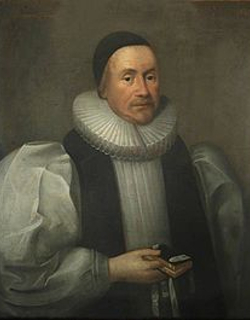
Dúnán, the first bishop of Dublin, appointed under Dublin‘s Hiberno-Norse kings, dies on May 6, 1074. He is known also as Donatus or Donat. The diocese is put on a regular basis, in 1028, at the request of Sigtrygg Silkbeard. In his obituary in the Annals of Ulster, Dúnán is described as “chief bishop of the foreigners.”
It has been traditionally said that Dúnán was consecrated by Æthelnoth, the Archbishop of Canterbury. This is now disputed, with scholars saying that his successor, Gilla Patráic, was the first to be consecrated in this way.
Dúnán is an Easterling or Östman, and the first of the line of prelates who occupy the see. James Ware, who mentions several so-called bishops of Dublin of an earlier date, is supported by the Martyrology of Donegal, but John Lanigan is of opinion that there are no sufficient grounds for so regarding them, except in the case of Siadhal or Sedulius, who appears to have been a bishop. Dúnán is, however, termed abbot of Dublin in the Annals of the Four Masters (AD 785), and from this it would seem he is only a monastic bishop. Diocesan episcopacy has not been established in Ireland in his time. Dúnán, therefore, must be regarded as the first bishop of Dublin in the modern sense of the title.
The Annals of the Four Masters term him “ardeasbog”, which Dr. John O’Donovan translates archbishop, but James Henthorn Todd points out that the correct rendering of the word is “chief or eminent bishop,” and that it includes no idea of jurisdiction. His diocese is comprised within the walls of the city, beyond which the Danish power does not extend.
The chief event of Dúnán’s life appears to be the foundation of the Cathedral of the Holy Trinity, commonly called Christ Church, or more properly its endowment and reorganisation in accordance with the views of the Danish settlers. For it appears, from an inquisition held in the reign of Richard II, that a church is “founded and endowed there by divers Irishmen whose names were unknown, time out of mind, and long before the conquest of Ireland.” This ancient site is bestowed on Dúnán by Sitric, king of the Danes of Dublin, and with it “sufficient gold and silver” for the erection of the new church, and as an endowment he grants him “the lands Bealduleek, Rechen, and Portrahern, with their villains, corn, and cattle.”
Sitric, according to the annalist Tigernach Ua Braín, had gone over the sea in 1035, probably for the sake of religious retirement, leaving his nephew as king of Dublin in his place. This is three years before Dúnán’s appointment, and as the king dies in 1042, it must be when he becomes a monk, if Tigernach is right, that he makes the grant referred to, and therefore the new foundation of Christ Church appears to have taken place between 1038 and 1042.
The site is described in the Black Book of Christ Church as “the voltæ i.e. arches founded by the Danes before the arrival of Saint Patrick in Ireland, and it is added that Saint Patrick celebrated mass in an arch or vault which has been since known by his name.” This story, as it stands, cannot be accepted as authentic history, for Saint Patrick died according to the usual belief in 490, whereas the earliest mention of Danes in Ireland is in 795. In the recent discovery made at Christ Church of a crypt hitherto unknown, some very ancient work is found, which is probably part of the buildings. If so, they may be the remains of the ecclesiastical structures originally occupied by the abbots of Dublin. The legendary connection of the place with Saint Patrick belongs to the period when, as Dr. O’Donovan observes, “the christian Danes refused to submit to the ecclesiastical jurisdiction of Armagh, and when it was found useful by the Danish party to have it believed that their ancestors had been settled in Dublin as early as the fifth century, and were converted to christianity by Saint Patrick.”
When the church is built, and the secular canons by whom it is to be served are installed, Dúnán furnishes it with a liberal supply of relics, of which a list is given in the Book of Obits of Christ Church, published by Dr. Todd. Other buildings erected by him are the church of St. Michael (now the Synod House), hard by the cathedral, and a palace for himself and his successors. He enters into a correspondence with Lanfranc on some ecclesiastical questions about which he desires information. Lanfranc’s answer is preserved, and is published by Archbishop James Ussher. It is highly probable that this deference to the Archbishop of Canterbury may have something to do with the claim put forward by the latter in a synod held in 1072, two years before Dúnán’s death, in which, on the supposed authority of Bede, he asserts his supremacy over the church of Ireland – a claim which Dúnán’s successor admits in the most explicit manner at his consecration in Canterbury Cathedral.
Dunan died on May 6, 1074, and is buried in Christ Church, at the right-hand side of the altar. There is another who also bears the alternative name of Donat (1085), but he is more generally known as Dungus.


